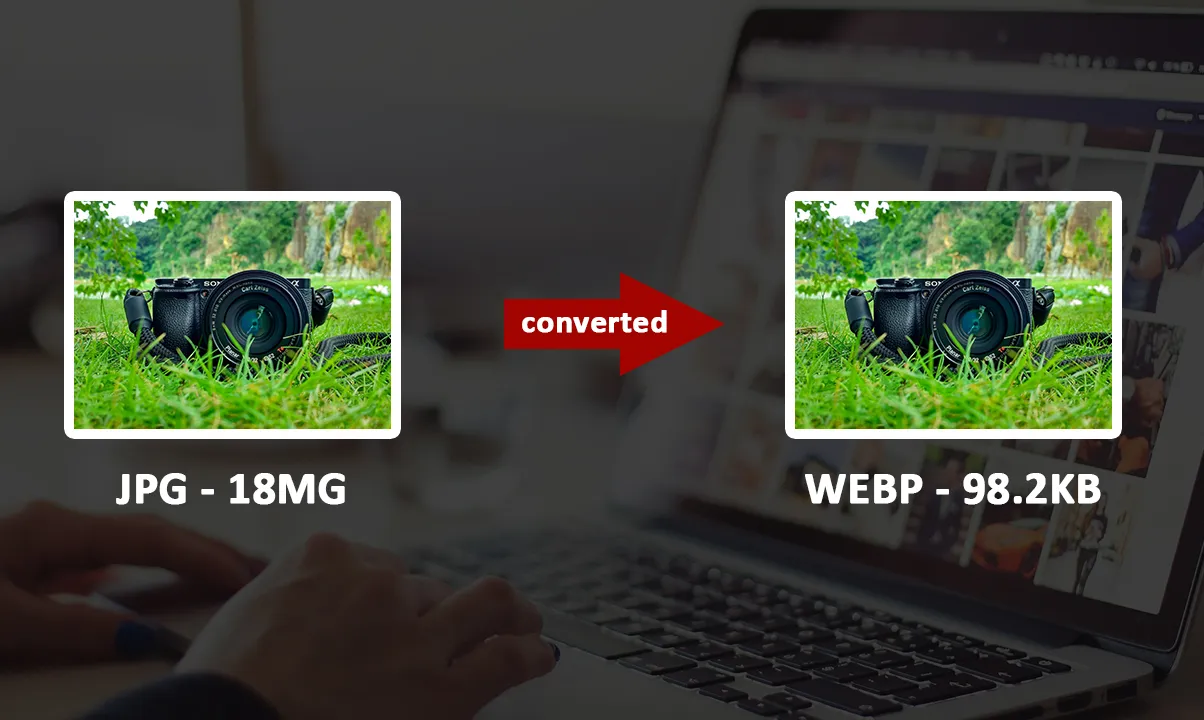In today’s fast-paced digital world, users expect websites to load in the blink of an eye. One major factor affecting load speed is the size of images on your website. Converting images to a more optimized format like WebP is a game-changer in enhancing your site’s performance. But what is WebP, and why should you make the switch? Let’s dive into the details.
What Is WebP?
Origins and Development by Google
WebP is a modern image format developed by Google that provides superior lossless and lossy compression for images on the web. Launched in 2010, WebP aims to reduce file sizes without compromising on quality.
Differences from Traditional Formats
Unlike traditional formats like JPEG and PNG, WebP is designed to serve as a one-size-fits-all format, offering support for both lossy and lossless compression, as well as animations and transparency.
Benefits of WebP Over Other Formats
Smaller File Sizes
WebP images are typically 25-35% smaller than JPEGs and PNGs, without compromising on quality. This size reduction helps save storage space and reduces bandwidth usage.
Higher Image Quality
Thanks to its advanced compression techniques, WebP delivers crisp images with smaller file sizes, maintaining high-quality visuals that look just as good as JPEGs and PNGs.
Faster Loading Times
With reduced file sizes, WebP images load faster on web pages, providing a seamless user experience and helping your site meet Google’s page speed requirements.
How Does WebP Work?
Compression Methods: Lossy and Lossless
WebP offers both lossy and lossless compression. Lossy compression minimizes file sizes by discarding certain data, while lossless compression reduces file size without any data loss, making it ideal for preserving image quality.
Transparency and Animation Support
WebP supports transparent images and animations, making it a versatile alternative to formats like PNG and GIF.
Performance Boost for Websites
Impact on SEO and Page Rankings
Fast-loading pages are crucial for SEO, as Google considers page speed a ranking factor. By converting images to WebP, you improve your site’s loading time, which can positively impact your search engine rankings.
Reduced Bandwidth Consumption
WebP images consume less bandwidth, meaning visitors can load your pages faster, even on slower internet connections or mobile networks.
WebP vs. JPEG
Quality and Compression Comparison
WebP files are generally smaller than JPEGs, while still offering comparable quality. JPEG is known for quality in photographs, but WebP’s superior compression often results in faster loads without a noticeable dip in quality.
Best Use Cases for WebP and JPEG
Use JPEG for non-web environments and WebP for websites where both quality and size optimization are crucial.
WebP vs. PNG
Quality and Compression Comparison
WebP provides similar quality at a smaller file size, especially for images with transparency, making it a great replacement for PNGs.
When to Use WebP Over PNG
WebP should be used whenever transparency is needed on web-based platforms, as it offers smaller file sizes without sacrificing image quality.
WebP vs. GIF
Animation Support Comparison
Both WebP and GIF support animations, but WebP files are generally much smaller, which reduces loading times and enhances user experience.
Enhanced Animation Features with WebP
WebP supports high-quality animations, which is particularly beneficial for image-heavy sites like e-commerce or blogs that feature animated visuals.
How to Convert Images to WebP
Online Conversion Tools
Several online tools like Convertio and Online-Convert allow you to easily convert images to WebP format for free.
Software and Plugin Options
You can use software like Adobe Photoshop with WebP plugins or other graphic design tools that support WebP to save images directly in the WebP format.
Automated Conversion with CMS Platforms
Many CMS platforms like WordPress offer plugins to automatically convert images to WebP, simplifying the process for site owners.
Best Practices for Using WebP
Balancing Quality with Compression
Experiment with different compression settings to achieve the best quality without sacrificing too much detail.
Optimal File Sizes for WebP
Aim for images under 100KB for best loading speeds, but ensure the resolution remains suitable for your website’s visual needs.
Potential Drawbacks of WebP
Limited Browser and Platform Compatibility
Although most major browsers support WebP, some older versions do not. Check compatibility requirements to ensure users can view your images.
Workarounds for Compatibility Issues
Consider using responsive images with fallback options to ensure compatibility across different browsers and devices.
The Future of Image Formats and WebP
Trends in Image Formats
With the rise of high-resolution screens and 4K technology, efficient image formats like WebP are likely to grow in popularity.
WebP’s Place in a Multimedia World
WebP is set to remain a strong choice for web-based images as users prioritize faster load times and mobile-friendly experiences.
How WebP Benefits SEO
Improved Page Load Speeds and Rankings
By improving load speeds, WebP can boost SEO efforts, potentially improving search engine visibility and driving more traffic.
Enhanced User Experience
WebP images enhance UX, leading to increased user engagement, reduced bounce rates, and longer time on site, which indirectly benefits SEO.
Using WebP for Mobile Optimization
Better Performance on Mobile Networks
With WebP’s smaller file sizes, mobile users can load images quickly even on lower-bandwidth networks, reducing data costs and improving access.
Improved UX for Mobile Visitors
By using WebP, you cater to mobile users, ensuring a better, faster browsing experience, especially on image-heavy websites.
Conclusion
Converting your images to WebP format is a powerful way to improve your website’s performance, load speeds, and user experience. By choosing WebP, you not only meet modern SEO requirements but also provide a visually appealing experience for your audience. Take advantage of this versatile, efficient format to stay competitive in today’s digital landscape.
Frequently Asked Questions
1. Can I convert all my images to WebP?
Yes, you can, though it’s recommended to check compatibility across browsers and devices.
2. Is WebP suitable for printed media?
No, WebP is primarily designed for web use, not print.
3. Does WebP work on all browsers?
Most modern browsers support WebP, but some older ones may not.
4. How much file size reduction can I expect?
WebP typically reduces file sizes by 25-35% compared to JPEG and PNG.
5. Are there any drawbacks to WebP?
The main drawback is compatibility with some older browsers; fallback options are recommended.


No responses yet